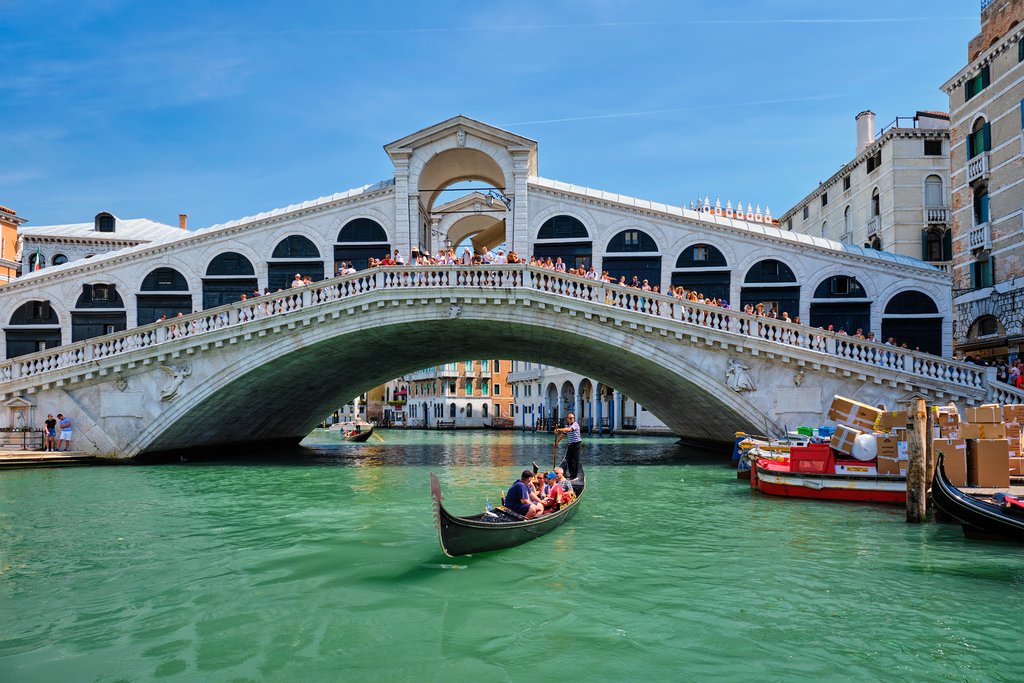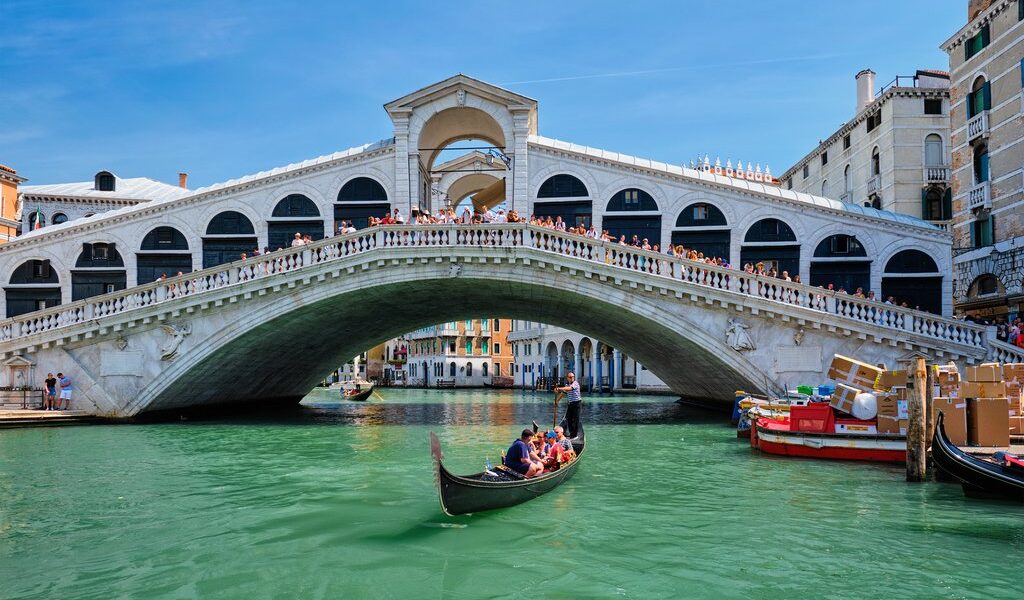
Italy is a place you can spend a lifetime getting to know, while still feeling like you’ve barely scratched the surface. This country rewards long periods of time and repeat visits, but even if you only have a few days, you can still get a sense of its many rich and varied regions. In as little as five days (or as much as three weeks), you can cover Northern Italy’s elegant cities, sweeping mountains, and seaside towns, seeing some legendary works of art and architecture and enjoying more than a few good meals.
## Embarking on an Italian Adventure: Exploring Northern Italy Through Time
Your Italian escapade truly never concludes when traversing the captivating landscapes of Northern Italy. However, even within a limited timeframe of four or five days, you can establish your base in the vibrant city of Milan and venture forth to discover some of the remarkable highlights in its vicinity. These captivating destinations include the serene beauty of Lake Como and the equally mesmerizing Lake Garda, the historical allure of Turin, and the culinary haven of Bologna. Each of these locations offers a unique glimpse into the diverse tapestry of Northern Italy.
Extending your sojourn to encompass up to two weeks unlocks even greater possibilities for exploration. You can broaden your horizons by venturing towards the enchanting city of Venice and the surrounding Veneto region along the Adriatic coast. Additionally, you can journey southward to the artistic heart of Florence and the picturesque Tuscan hill towns, each brimming with its own distinctive charm and history. With a generous three weeks at your disposal, the options become even more enticing. You can opt to head west towards the captivating cluster of five towns collectively known as the Cinque Terre, each offering breathtaking coastal views. Alternatively, you can journey north and immerse yourself in the majestic, snow-capped mountains that surround the charming cities of Trento and Bolzano, experiencing a different facet of Northern Italy’s natural beauty.
## Unveiling Northern Italy in 4-5 Days: A Whirlwind Tour
Even with a limited timeframe of less than a week in Northern Italy, you can still immerse yourself in a wealth of remarkable sights and experiences. Begin your adventure in Milan, the thriving fashion, culture, and business epicenter of Italy. Here, you can ascend to the roof of the intricately designed Duomo, the main cathedral, and be rewarded with panoramic views of the city and the distant, snow-capped mountains. Delve into history with a visit to the 16th-century, neoclassical Royal Palace, now transformed into a captivating museum. Don’t miss the opportunity to witness Leonardo da Vinci’s masterpiece, “The Last Supper,” housed in its own dedicated gallery. Be sure to wander through Galleria Vittorio Emanuele II, an elegant covered shopping arcade that exudes sophistication, and explore the imposing Castelo Sforzesco, a medieval fortification that stands as a testament to the city’s rich past.
On your second day, embark on an excursion to Lake Como, a destination long revered as a luxurious getaway for socialites and celebrities who have constructed magnificent villas directly on the water’s edge for decades. A relaxing day at the lake should encompass a guided tour of the charming city of Como, a leisurely stroll along the waterfront promenade, and perhaps even a delightful boat ride. Make sure to include a visit to the terraced 18th-century gardens of the Villa Serbelloni Park, a true oasis of tranquility and beauty.
The subsequent three days will be a captivating whirlwind of beautiful sights as you explore several cities within easy driving or train distance of Milan. These include the elegant Turin, the culinary mecca of Bologna, and even the renowned Parma and Modena, each offering a unique blend of culture, history, and gastronomy. Turin, also known as Torino, presents a captivating mix of elegant palaces, such as the Palazzo Reale and Palazzo Madama, now both museums offering guided tours showcasing their impressive collections of art, antiquities, and royal furniture and objects. You’ll also find a variety of churches and cathedrals representing different eras and architectural styles. The interactive National Cinema Museum, housed within a 19th-century synagogue, is a definite highlight for film enthusiasts.
Bologna is renowned for its prestigious 11th-century university, as well as the central square, Piazza Maggiore, with its age-old buildings. Beyond these, the city boasts a number of art museums and architectural landmarks. However, Bologna’s greatest distinction lies perhaps in its reputation as one of Italy’s finest food cities, having birthed culinary delicacies such as tortellini and ragu alla bolognese, now cherished around the globe. Parma and Modena are also celebrated for their culinary prowess, with Parma being the home of the famed Parma ham and Modena emerging as a new foodie destination, boasting exceptional restaurants like Osteria Francescana, consistently ranked among the best in the world.
## Northern Italy in 1 Week: Expanding Your Horizons
Venture eastwards from Milan, following the itinerary detailed above, and culminate your journey with two unforgettable days in Venice. This enchanting city, interlaced with canals and hidden alleyways, houses art institutions that safeguard some of the world’s greatest masterpieces. Venice reveals its secrets gradually, but is also compact enough to experience in a shorter period of time.
Awaken early to experience the bustling Rialto Market at its least crowded, then embark on a vaporetto, or waterbus, along the Grand Canal to behold the elegant mansions that line its banks, such as Ca’ Rezzonico, where the esteemed poet Robert Browning passed away, and Palazzo Mocenigo, once the residence of Lord Byron. Your final destination is the Piazza San Marco, home to the magnificent Basilica di San Marco and the Doge’s Palace, both iconic landmarks featured in numerous paintings by the renowned artist Canaletto. After a delightful lunch in a classic Venetian trattoria, delve into some of the city’s finest art at the Accademia, a gallery showcasing works by Venetian masters such as Tintoretto, Titian, Bellini, and Tiepolo.
On your second day in Venice, and the final full day of your trip, consider taking a water taxi to the Peggy Guggenheim collection, a museum dedicated to European and American art housed in the Palazzo Venier dei Leoni, her former residence. In the afternoon, venture out to the islands of Murano, the center of the Veneto’s renowned glass trade, and Burano, a charming fishing village characterized by brightly colored houses and known for its delicate lace trade.
The farthest island of Torcello is also worthy of a visit, where Byzantine mosaics at the Cathedral of Santa Maria Dell’Assunta depict the story of the Last Judgment. Additionally, exceptional works of art are on display at the Casa Museo Andrich, formerly an artists’ home. A significant portion of the island is dedicated to nature trails, and the Ponte del Diavolo, or Devil’s Bridge, is a popular spot for photos due to its unique construction without railings.
Alternatively, you can embark on a culinary adventure through Northern Italy, indulging in delectable food and wine experiences. Explore the 11th-century university and covered porticos in Bologna, tantalize your taste buds with visits to prosciutto and parmesan producers, and find serenity in a quiet medieval town nestled in the Emilia Romagna countryside.
## Northern Italy in 2 Weeks: Deeper Exploration
With two weeks at your disposal, seize the opportunity to further explore the Veneto region surrounding Venice before taking a train south to Florence. The numerous Tuscan hill towns that surround Florence are brimming with artistic and architectural treasures, as well as vineyards, wine estates, and restaurants serving mouthwatering Tuscan and Etruscan specialties.
While Venice may be the most renowned city in the Veneto region, there are other notable destinations, thanks to the works of William Shakespeare. Among them are Verona and Padua, the settings for “Romeo and Juliet” and the “Taming of the Shrew,” respectively.
In Verona, you can visit the supposed house of the Capulet family, where you can still see the balcony from one of the most famous scenes in English literature, where people in love come to write messages to each other on the walls. In Padua, the Shakespeare connection may be less direct, but the city is worth visiting for its centuries-old university, where Galileo once lectured, as well as Cappella Degli Scrovegni, which houses frescoes by the master Giotto.
As the birthplace of the Italian Renaissance, Florence is a treasure trove of majestic churches adorned with frescoes, museums exhibiting historical works of art, and iconic landmarks such as the Ponte Vecchio bridge. Any visit to this Tuscan city should include a visit to the Uffizi and the Accademia, home to Michelangelo’s David. When you seek respite from the art, the bustling San Lorenzo Market has been transformed into a food hall where you can savor the region’s best delicacies year-round.
Beyond the city limits, a string of picturesque hill towns awaits your exploration. San Gimignano, with its 14 medieval towers that create an elegant skyline, the charming Siena, and Pisa with its iconic leaning tower, which is actually a freestanding campanile, are all within easy reach. In between, you can visit grand wine estates that produce well-known appellations such as Montepulciano and Montalcino.
Alternatively, you can dedicate two relaxing weeks to exploring Milan and the Lakes Region, dividing your time between leisurely stays on Lake Como, Lake Maggiore, and Lake Garda.
## Northern Italy in 3 Weeks: Expanding Your Horizons Further
With three weeks in Italy, you can venture further afield and visit the string of coastal towns known as the Cinque Terre (the five lands) or the Trentino region, where rolling hills dotted with vineyards gradually transition into the snow-covered peaks of the Alps, and Italy begins to evoke the atmosphere of Switzerland.
Known as the Italian Riviera, Cinque Terre’s five villages along the Ligurian Sea have gained increasing popularity over the years. Each village presents a cascade of colorful homes, lush vegetation, and charming streets that appear to tumble gently towards the sea, where beaches offer a combination of sand for relaxation and rocks for diving.
A long footpath connects all five villages—Riomaggiore, Manarola, Corniglia, Vernazza, and Monterosso al Mare—and hiking routes wind through the hills, leading you up mountains and through vineyards, offering breathtaking views. There are also historic churches to explore, such as the 15th-century Oratorio San Rocco, and historic fortresses like the Castello Doria. However, the primary allure of these towns lies in relaxation, enjoying seafood by the water, and embracing an atmosphere that is unique to this region.
Further up the coast, consider making a stop at Portofino and exploring the numerous treasures it has to offer both on land and in the sea. These include the beautiful San Fruttuoso Beach, nestled in the shadow of a medieval abbey, and the Christ of the Abyss statue, submerged on the sea floor in memory of Dario Gonzatti, the first Italian to use diving gear, which you can observe on a snorkeling tour.
If your preferences lean more towards mountains than beaches, you can adjust your itinerary to head to Trentino Alto Adige after your initial week in Milan. This mountainous region, also known as South Tyrol, sits on the border of Switzerland and Austria, and is a popular destination for outdoor activities in any season. Skiers and snowboarders flock to two distinct mountain ranges – the Dolomites and the Alps – for some exhilarating winter fun. In summer, when the snow has melted, hiking routes become accessible, leading you between charming alpine towns such as Meran and historic buildings like Trautmannsdorf Castle, all set against a backdrop of snow-capped peaks, enchanting forests, and emerald alpine lakes.
This detailed exploration provides a comprehensive guide to planning your Northern Italian adventure, regardless of the duration of your stay.
B-1326

